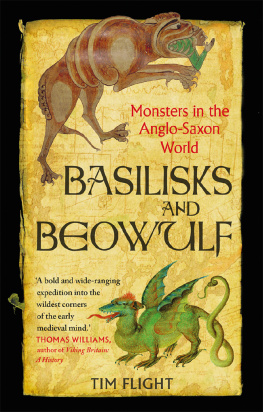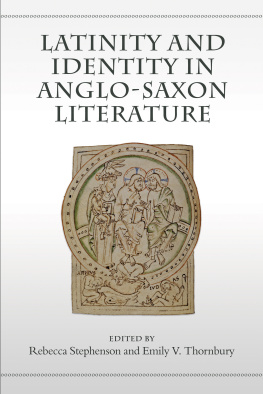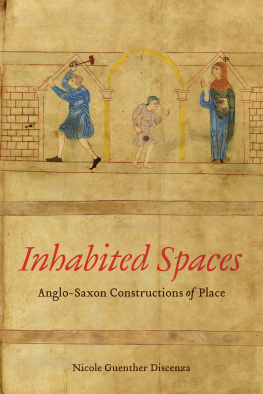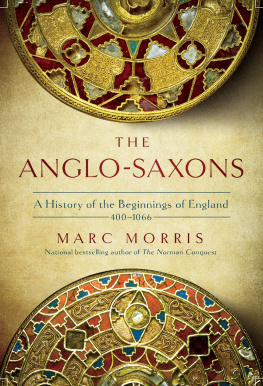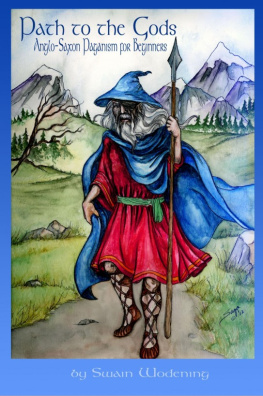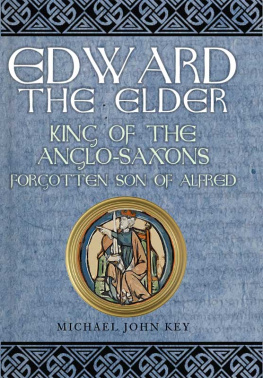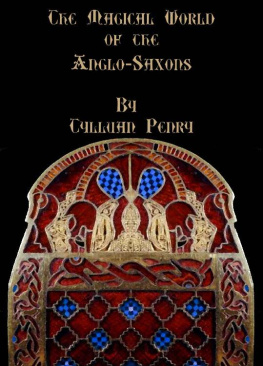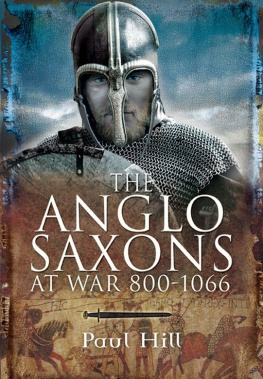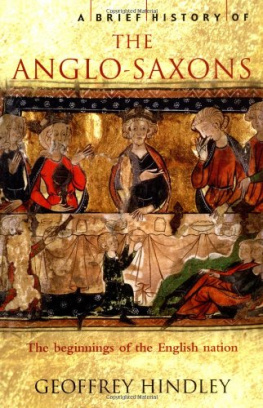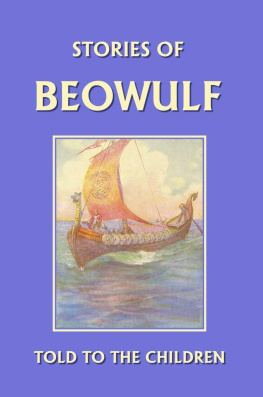For my mother, Mary Flight, who had her own Beowulfian fight with cancer while this book was being written, and my wife, Martina Wise, the blue to my claret.
In memory of Michael Francis Patrick Lowe (19292017)
Eadig bi se e eamod leofa; cyme him seo ar of heofonum
Published by
REAKTION BOOKS LTD
Unit 32, Waterside
4448 Wharf Road
London N1 7UX, UK
www.reaktionbooks.co.uk
First published 2021
Copyright Tim Flight 2021
All rights reserved
No part of this publication may be reproduced, stored in a retrieval system, or transmitted, in any form or by any means, electronic, mechanical, photocopying, recording or otherwise, without the prior permission of the publishers
Page references in the Photo Acknowledgements and
Index match the printed edition of this book.
Printed and bound in Great Britain by TJ Books Ltd, Padstow, Cornwall
A catalogue record for this book is available from the British Library
eISBN 9781789144345
INTRODUCTION
T he Anglo-Saxon period lasted around seven hundred years, from the fifth to the early twelfth century AD. With so many changes and events taking place in that time, the task of the historian is unenviable. Moreover, the vast majority of voices that have survived are those of the cultural elite, which means we must be extremely careful when talking of the defining beliefs and character of the Anglo-Saxons more generally. With these limitations in mind, let us briefly review what we know of the period as a whole before examining the importance of monsters to such a long, rich and varied culture.
Who Were the Anglo-Saxons?
The term Anglo-Saxons is given to the Continental Germanic tribes who arrived and settled in what was then known as Britannia from the mid-fifth century onwards. Despite what the name might suggest, these tribes also included Angles, Jutes, Saxons, Batavians, Friesians and Franks among their number. Although the Anglo-Saxon period is usually given a start date of about AD 450, Germanic people had been living in small numbers in Britannia since the early fourth century, having been employed as soldiers by the Roman rulers of Britain.
According to Gildas, these wolves then set about slaughtering the Britons and leaving the country in ruins, and soon the place was overrun by countless ferocious immigrants.
However, while there can be no doubt that the large-scale arrival of the Germanic tribes changed the country forever, Gildass version of events has been challenged by archaeology over the last century. The archaeologist Heinrich Hrke estimates that 100,000200,000 Germanic people migrated to Britannia but that they did so over the course of about a century, and wider archaeological evidence simply does not support Gildass claims of widespread slaughter. While we cannot say for certain why the Anglo-Saxons came to Britannia, it seems that the immigrants settled relatively peacefully, establishing themselves as the new elite, and that the native Britons, by and large, simply adapted to this.
The Germanic immigrants brought with them their own religious practices and pantheon, which in part explains the Christian Gildass open hostility. We have to tread very carefully with the idea of pre-conversion religious practices, however. While we know that the early Anglo-Saxons worshipped Tiw, Woden and Thor (as the English names for Tuesday, Wednesday and Thursday memorialize), it is a grave error to assume that this meant that their religion was identical with the more familiar Scandinavian
By far the biggest change in Anglo-Saxon England came in 597, when the missionary Augustine of Canterbury landed on Thanet, an island off the coast of Kent, following a long and arduous journey from Rome. Sent by Pope Gregory I after he was shocked to learn that the beautiful Anglo-Saxon slaves he saw at a market were pagans, so folklore has it Augustine slowly made inroads with the Kentish kings and established his monastery at Canterbury. The conversion of the English did not happen overnight but took centuries, and it is clear even from the late tenth-century writings of lfric of Eynsham that pockets of paganism survived long after Augustines arrival. Within a couple of hundred years of the Gregorian mission, however, Anglo-Saxon England was predominantly Christian. In the early eighth century, Bede was able to write his Historia ecclesiastica gentis Anglorum (History of the English Church and People), which traced Anglo-Saxon history up to his day, from the migration through the conversion.
What made the process of conversion especially tough for Augustine and those who succeeded him after his death in 604 was the fact that Anglo-Saxon England was by no means a unified The Roman mission was helped, at first, by the Celtic Church, which sent its own missionaries to northern England to convert the kings of Northumbria, but disputes over the specifics of practice and observation led to a clash at the Synod of Whitby in 664, from which the Roman Church emerged triumphant.
The new religion brought with it learning. Christianity is a religion of the book, and monks were encouraged to read widely and ponder the Bible in exacting detail. While most Anglo-Saxons were illiterate, within a century of Augustines arrival on Thanet, Anglo-Saxon England had produced a poet who was without doubt one of the best-educated men in Europe: Aldhelm, Abbot of Malmesbury (c. 639709). Aldhelm was as au fait with Virgil as he was with patristic theology, and wrote witty and complex literature in Latin that still exercises scholars to this day. Aldhelm was also in frequent contact with people on the Continent, and this brings us neatly to another advantage of the new religion: intellectual networks. Christianity tuned the Anglo-Saxons into the latest developments of thought in Europe, and encouraged exchanges of books, ideas and outstanding individuals with distant nations. Although long-distance travel was very limited by modern standards, the minority of the Anglo-Saxon population who were able to visit Europe became so numerous that a permanent hostel, the Schola Saxonum, was established for English pilgrims in Rome. Anglo-Saxon England had a Greek Archbishop of Canterbury, Theodore of Tarsus, in the seventh century and produced scholars famous across the Continent for their learning in Aldhelm, Bede and Alcuin. Christianitys influence on the Anglo-Saxon period also extended to language: although most people spoke versions of Old English, the corpus of Anglo-Latin texts positively dwarfs the surviving poetry and prose in the native tongue.
Anglo-Saxon Englands fertile intellectual environment was disrupted in 793. That year, the Viking Age noisily began with the sack of Lindisfarne monastery. Opportunistic coastal raids developed over the coming decades into country-wide mass immigration and conquest, which ceased only after the campaigns of Alfred the Great, king of Wessex (c. 847899). Alfred managed to defeat the so-called Great Heathen Army after severe early setbacks and forced the Viking leader Guthrum to sign the Treaty of Wedmore, which saw the latter baptized and permanently banished from Wessex. Although the Vikings were allowed to stay in a part of the country renamed the Danelaw, the period saw the first use of the term Anglo-Saxon to describe the non-Scandinavian population. The first king of England as we would recognize him, however, was Alfreds grandson thelstan (

